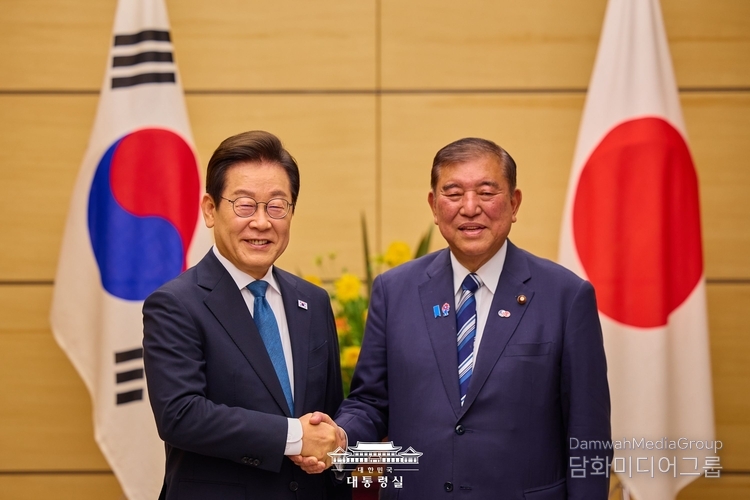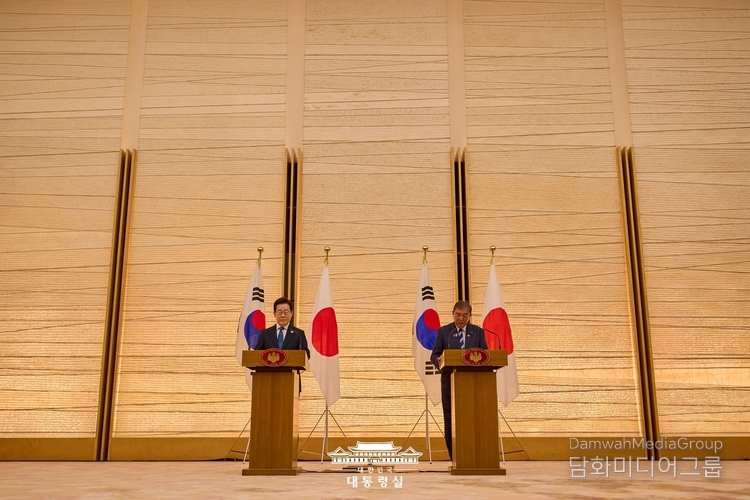By UN Journal Lee Jon-young
President Lee Jae-myung, who is visiting Japan, emphasized on August 23 that “South Korea and Japan are the best partners for cooperation in various fields, such as society, culture, and the environment, in ways that are mutually beneficial and helpful.”
Following his summit meeting with Japanese Prime Minister Shigeru Ishiba at the Prime Minister's Official Residence in Tokyo on the same day, President Lee stated during a joint press conference, “Since taking office, I have consistently emphasized that South Korea and Japan are neighbors sharing the same backyard and inseparable partners who must closely cooperate for peace and prosperity.”

President Lee also said, “I am the first South Korean president to visit Japan as the first bilateral visit after taking office since the normalization of diplomatic relations between South Korea and Japan in 1965,” adding, “This also shows the importance we place on South Korea-U.S. and South Korea-Japan relations.”
This was the second summit meeting between President Lee and Prime Minister Ishiba, following their meeting in June during the G7 summit, 67 days ago. The summit meeting lasted nearly two hours, beginning with a small-scale meeting followed by an expanded meeting.
President Lee said, “Today marks the resumption of shuttle diplomacy between the leaders of the two countries,” adding, “I hope that shuttle diplomacy, in which the leaders visit and hold talks frequently without being bound by formalities, will become a new model for South Korea-Japan diplomacy.”
During the summit, the two leaders agreed on cooperation in future industries such as hydrogen and artificial intelligence, joint responses to social issues such as low birth rates and aging populations, and strengthening human exchange through the expansion of working holidays.
They also reaffirmed their commitment to the complete denuclearization of the Korean Peninsula, lasting peace, and strengthened cooperation between South Korea, the United States, and Japan.
Among these, the two leaders agreed to launch a consultative body between authorities to seek solutions to common challenges faced by both countries, such as low birth rates, aging populations, concentration in the capital region, agriculture, and disasters.
They also agreed to expand the number of working holiday participants to provide opportunities for young people in South Korea and Japan to experience and understand each other's cultures.

In the security field, they reaffirmed their commitment to the complete denuclearization of the Korean Peninsula and the establishment of lasting peace, and agreed to continue close coordination on North Korea policy.
Furthermore, recognizing that unwavering South Korea-Japan and South Korea-U.S.-Japan cooperation is of utmost importance amid rapidly changing international circumstances, they agreed to create a virtuous cycle in which the development of South Korea-Japan relations leads to the strengthening of South Korea-U.S.-Japan cooperation.

